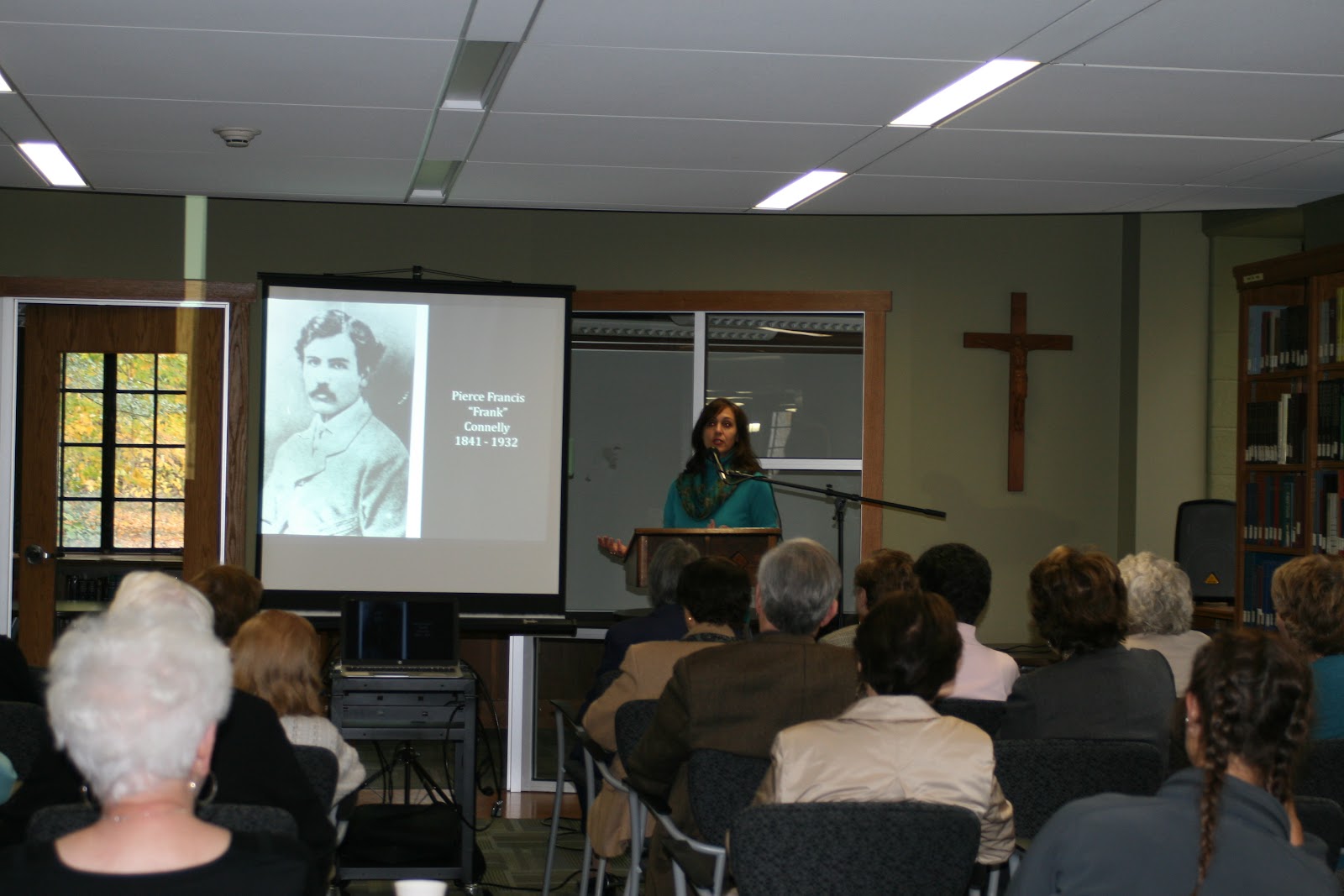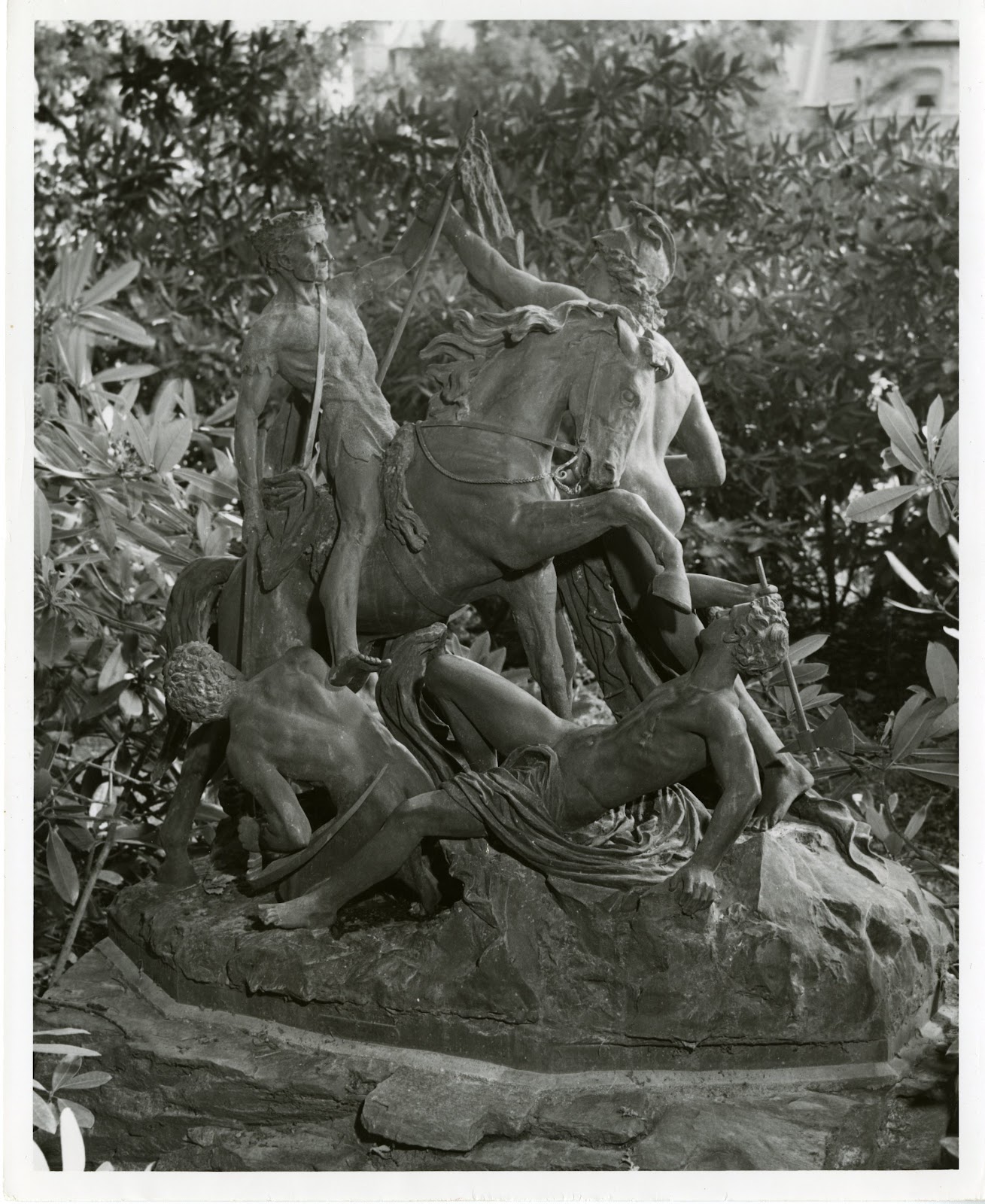 On Wednesday, November 1, we had the distinct pleasure of hosting Dr. Susanna Gold at the Gertrude Kistler Memorial Library at Rosemont College. She gave an informative lecture on the works of Pierce Francis “Frank” Connelly, son of Cornelia Connelly who was the foundress of the Society of the Holy Child of Jesus.
On Wednesday, November 1, we had the distinct pleasure of hosting Dr. Susanna Gold at the Gertrude Kistler Memorial Library at Rosemont College. She gave an informative lecture on the works of Pierce Francis “Frank” Connelly, son of Cornelia Connelly who was the foundress of the Society of the Holy Child of Jesus.

Dr. Gold laid out Frank’s journey through the arts in Italy as well as his entrance into the Centennial Exhibition in Philadelphia, PA in 1876. She discussed his works of art that were on display prominently at the Exhibition. The piece that drew the most interest was very different from the rest of Frank Connelly’s work. Most of his sculptures were neoclassical style, women sculptures, while the piece that was the focus of the talk was much different. "Honor Arresting the Triumph of Death," is a group composition that features six different figures: Death, Death’s horse, Strength, Courage, Perseverance and Hope. Dr. Gold discusses how this piece, unlike others at the exhibit that portrayed aspects of the Civil War in the United States of America, touched everyone and allowed for the focus on the sacrifice of human life rather than the sides of the war. Most of Connelly’s work was sold at this exhibition Dr. Gold noted, except for this one piece.
An article in The Rambler relays the story of how the sculpture came to Rosemont college. In the summer of 1939, Rev. Mother Provincial and Rev Mother Ignatius traveled to Rome where the meet Frank's daughter, Mariana who later became Princess Borghese. She felt that the sculpture should be in the hands of the Society of the Holy Child Jesus and gifted it to Rosemont College. The sculpture has been in various places on the campus and is currently close to the science building.
If you would like to learn more about Frank Connelly or his work, schedule an appointment with our archives department or you can check out Dr. Gold's book The unfinished exhibition: Visualizing myth, memory and the Civil War in centennial America from the Gertrude Kistler Memorial Library.
Unknown. (1939, October 13). Princess Borghese presents statue: Group was executed by F.P.
Connelly. The Rambler.




